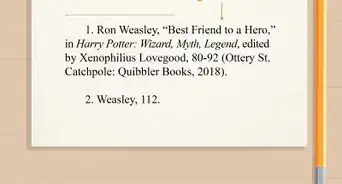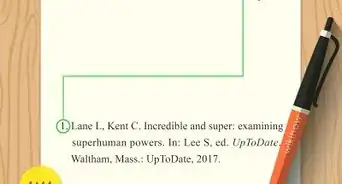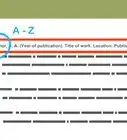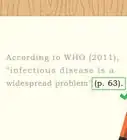This article was co-authored by wikiHow staff writer, Jennifer Mueller, JD. Jennifer Mueller is a wikiHow Content Creator. She specializes in reviewing, fact-checking, and evaluating wikiHow's content to ensure thoroughness and accuracy. Jennifer holds a JD from Indiana University Maurer School of Law in 2006.
There are 12 references cited in this article, which can be found at the bottom of the page.
This article has been viewed 449,536 times.
Learn more...
When you use a textbook as a reference in a research paper, your readers should be able to find the information you used. The way you provide this information depends on the citation style you use. If you're writing in education, psychology, and other social sciences, you'll likely use American Psychological Association (APA) style. In the humanities and liberal arts, you'll probably use Modern Language Association (MLA) style. Other disciplines, such as business, law, and history, use the Chicago Manual of Style. In each style, a short in-text citation guides the reader to a more complete citation at the end of your paper.[1]
Steps
Using APA Style
-
1Start with the last name of the author or editor. The first part of an APA citation provides the last name and initials of the author or editor of the textbook. Follow an editor's name with the abbreviation "Ed." in parentheses.[2]
- For example: "Lane, L. (Ed.)"
- If there are multiple authors or editors, separate their names with commas. Use an ampersand before the last name. For example: "Lane, L., Lee, S., & Kent, C. (Eds.)"
-
2Add the year of publication in parentheses. Immediately following the names of the authors or editors, you'll place the year the textbook was published. Because textbooks can have many editions, make sure you use the year the edition you used was published.[3]
- For example: "Lane, L. (Ed.). (2007)."
Advertisement -
3Provide the title of the textbook. If you used the entire textbook as a reference, put the full title in italics after the year of publication. To find the correct title, look on the title page, not the cover of the book.[4]
- Use sentence-style capitalization, only capitalizing the first word of the title. If the textbook has a subtitle, use an initial capital letter for the subtitle as well.
- For example: "Lane, L. (Ed.). (2007). Superhuman powers in global history."
- If the textbook isn't the first edition, provide the number of the edition in parentheses after the title. For example: "Lane, L. (Ed.). (2007). Superhuman powers in global history (5th ed.)."
-
4Close your citation with the name and location of the publisher. Look again to the title page of the textbook to find out the name of the publisher of the textbook and where they're located. For American publishers, list the city and state using two-letter postal abbreviations for the state.[5]
- For example: "Lane, L. (Ed.). (2007). Superhuman powers in global history. New York, NY: Penguin."
-
5Include information to specify a chapter. When you use a textbook as a reference, it's probable that you don't use the entire textbook. If you only ever used a single chapter of the textbook, point your readers directly to the part you used.[6]
- For example: "Lane, L. (Ed.). (2007). "The rise of superman. In Superhuman powers in global history (pp. 48-92). New York, NY: Penguin."
- If there is a separate author for the specific chapter you used, use their name as the first name listed at the beginning of the citation, then include any editors of the overall textbook before the title of the textbook. For example: "Lane, L. (2007). "The rise of superman. In Lee, S. (Ed.), Superhuman powers in global history (pp. 48-92). New York, NY: Penguin."
-
6Follow the author-date method for in-text citations. When you paraphrase or directly quote material you found in the textbook, you need to provide credit to that source. Typically you'll include the author's last name followed by the year of publication in parentheses.[7]
- For example: "(Lane, 2007)."
- If you happen to use the author's name in the sentence, you can simply put the date in parentheses after the author's name.
- For direct quotes, include the page number where the quoted material can be found. For example: "(Lane, 2007, p. 92)."
Using MLA Style
-
1Start with the author's full name, last name first. When using MLA, you want to include the full first and last name of the author. Reverse the order so that the last name appears first, then provide the name as listed on the title page.[8]
- For example: "Lane, Lois."
- If there are several authors, separate them with commas, using the word "and" before the last author. Don't reverse the order of any authors' names except the first. For example: "Lane, Lois, and Clark Kent."
- If there are editors instead of authors, follow their names with the abbreviation "eds." For example: "Lane, Lois, and Clark Kent, eds."
-
2Provide the title of the textbook. In MLA style, the title of the textbook is italicized. Unless you're citing directly to a specific chapter in the textbook, the title comes immediately after the names of the authors or editors.[9]
- Capitalize the first and last words of the article or chapter title, as well as any other major words. Never capitalize articles (a, an, the), conjunctions (and, but, for, nor, or, so, yet), or prepositions (in, of, to, between, against) regardless of the length of the word.
- For example: "Lane, Lois, and Clark Kent. Superhuman Powers in Global History."
-
3Give the article or chapter title if necessary. When using a textbook, you may only use one chapter of the textbook rather than the work as a whole. If only one chapter is relevant to your paper, point readers directly to that chapter.[10]
- Capitalize the title of the chapter or article the same as you would the title of the textbook.
- For example: "Lane, Lois, and Clark Kent. "The Rise of Superman. Superhuman Powers in Global History."
-
4Include publication information. The next part of an MLA citation lists the city where the textbook was published, the name of the publisher, and the year of publication. It isn't necessary to include a state or country where the city is located.[11]
- For example: "Lane, Lois, and Clark Kent. Superhuman Powers in Global History. New York: Penguin, 2007."
-
5List the medium of publication. For MLA citations, you need to state the form in which you accessed the textbook. In most cases you would have a printed book, so you would include the word "Print."[12]
- For example: "Lane, Lois, and Clark Kent. Superhuman Powers in Global History. New York: Penguin, 2007. Print."
-
6Use the author-page style for in-text citations. When you paraphrase or directly quote the textbook in your paper, include a parenthetical citation at the end of the sentence where that information is found that provides the author of the book and the page in that book where the information can be found.[13]
- For example: "(Lane, 92)."
- If you use the author's name in the sentence, you can simply follow it with the page number in parentheses – there's no need to repeat the author's name in your parenthetical reference.
Using Chicago Style
-
1Start with the author's first and last name. Author's names are listed in Chicago Style citations with their last name first, followed by their first name. If there are multiple authors, you reverse the order of the first author's name, listing the rest with their first names first.[14]
- For example: "Lane, Lois, and Clark Kent." Use "and" rather than an ampersand.
- If you're creating footnotes, you don't reverse the orders of any names. For example: "Lois Lane and Clark Kent." Don't include a comma before the "and" unless you've reversed the first name.
-
2Provide the title of the book. The next information in a Chicago-style citation is the italicized title of the book. Generally, you should capitalize all nouns, pronouns, verbs, adverbs, and adjectives. Don't capitalize articles, prepositions, or short words such as to or as unless they're the first word in the title.[15]
- For example: "Lane, Lois, and Clark Kent. Superhuman Powers in Global History."
- If there is both an author and an editor, list the editor's name after the title. For example: "Lane, Lois, and Clark Kent. Superhuman Powers in Global History, ed. Stan Lee."
- In footnotes, the authors' names are followed by a comma instead of a period. The book's title is still italicized.
-
3Include publication information. The next part of a Chicago-style citation provides the city where the book was published, the name of the publisher, and the year it was published. There is no need to include a state or country along with the city.[16]
- For example: "Lane, Lois, and Clark Kent. Superhuman Powers in Global History. New York: Penguin, 2007."
- In footnotes, you would put the publication information in parentheses. For example: "Lane, Lois, and Clark Kent. Superhuman Powers in Global History (New York: Penguin, 2007)."
-
4Add pinpoint citations for a specific chapter. If you only used a single chapter or section of the textbook for your paper, you can add the chapter title and page numbers to your Chicago citation to direct readers to the part you used.[17]
- For example:"Lane, Lois, and Clark Kent. "The Rise of Superman," in Superhuman Powers in Global History (New York: Penguin, 2007)."
- A footnote ends with the specific page where the information you paraphrased or quoted in your paper can be found. For example: "Lane, Lois, and Clark Kent. Superhuman Powers in Global History (New York: Penguin, 2007), 92."
-
5Use the author-date style for in-text citations. While academic publishers and many professionals prefer footnotes, author-date parenthetical citations frequently are used in the social sciences and other disciplines, particularly for undergraduate papers.[18]
- Include the last names of the authors and the year of publication, then put a comma and list the page or pages where the information can be found.
- For example: "(Lane and Kent 2007, 92)."
Community Q&A
-
QuestionHow do I cite an article from a textbook? I'm assuming it's just the author's last name (if not noted earlier) plus the page number.
 Community AnswerYou are correct. For example, (Thoreau 3). This would be a work by Henry David Thoreau, with the quote coming from page three.
Community AnswerYou are correct. For example, (Thoreau 3). This would be a work by Henry David Thoreau, with the quote coming from page three. -
QuestionHow do I cite an Edgar Allen Poe story from an English textbook?
 Community AnswerIf at all possible, you would want to find an original publication of the story, rather than citing the story from an English textbook, where it may be abridged. All citation methods prefer direct rather than indirect sources. From there, you would cite it as an individual story in a book, similar to the way you would cite a chapter in a textbook.
Community AnswerIf at all possible, you would want to find an original publication of the story, rather than citing the story from an English textbook, where it may be abridged. All citation methods prefer direct rather than indirect sources. From there, you would cite it as an individual story in a book, similar to the way you would cite a chapter in a textbook. -
QuestionMy textbook contains different excerpts of literature. When quoting, do I reference Homer, the original author, or the textbook author?
 Community AnswerIf you are quoting the story itself, you would reference Homer, since Homer is the author of the words you are quoting. Try to find a direct source rather than quoting the textbook's quote.
Community AnswerIf you are quoting the story itself, you would reference Homer, since Homer is the author of the words you are quoting. Try to find a direct source rather than quoting the textbook's quote.
References
- ↑ http://pitt.libguides.com/citationhelp
- ↑ https://owl.purdue.edu/owl/research_and_citation/apa_style/apa_formatting_and_style_guide/reference_list_books.html
- ↑ https://libraryguides.vu.edu.au/apa-referencing/7Books
- ↑ https://owl.purdue.edu/owl/research_and_citation/apa_style/apa_formatting_and_style_guide/reference_list_books.html
- ↑ https://libraryguides.vu.edu.au/apa-referencing/7Books
- ↑ https://guides.himmelfarb.gwu.edu/c.php?g=27779&p=170363
- ↑ https://owl.purdue.edu/owl/research_and_citation/apa_style/apa_formatting_and_style_guide/in_text_citations_author_authors.html
- ↑ https://guides.libraries.psu.edu/mlacitation/books
- ↑ https://guides.libraries.psu.edu/mlacitation/books
- ↑ https://guides.libraries.psu.edu/mlacitation/books
- ↑ https://owl.purdue.edu/owl/research_and_citation/mla_style/mla_formatting_and_style_guide/mla_works_cited_page_books.html
- ↑ https://owl.purdue.edu/owl/research_and_citation/mla_style/mla_formatting_and_style_guide/mla_works_cited_page_books.html
- ↑ https://owl.purdue.edu/owl/research_and_citation/mla_style/mla_formatting_and_style_guide/mla_in_text_citations_the_basics.html
- ↑ https://owl.purdue.edu/owl/research_and_citation/chicago_manual_17th_edition/cmos_formatting_and_style_guide/books.html
- ↑ https://libguides.heidelberg.edu/chicago/book/chapter
- ↑ https://libguides.heidelberg.edu/chicago/book/chapter
- ↑ https://aut.ac.nz.libguides.com/c.php?g=685064&p=5255801
- ↑ http://www.chicagomanualofstyle.org/tools_citationguide/citation-guide-2.html
About This Article
To cite a textbook using MLA, start with the author’s last name, then list their first name. Next, provide the title of the book in italics. If you only used a chapter, provide the chapter title in quotation marks. Then, note the publication information, including the city where the book was published, the name of the publisher, and the year of publication. Finally, note how you accessed the text, for example, "Print," or "Internet." For information on how to use APA and Chicago style, keep reading!


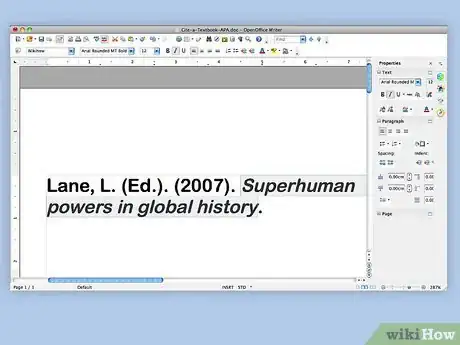

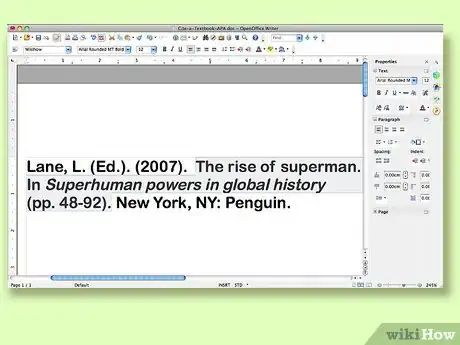
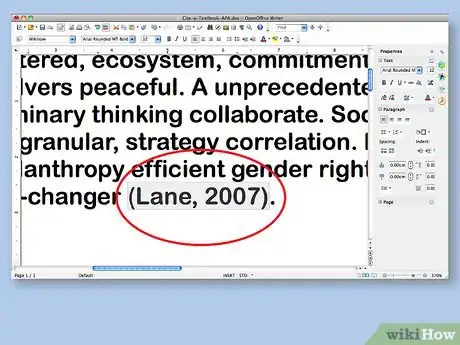
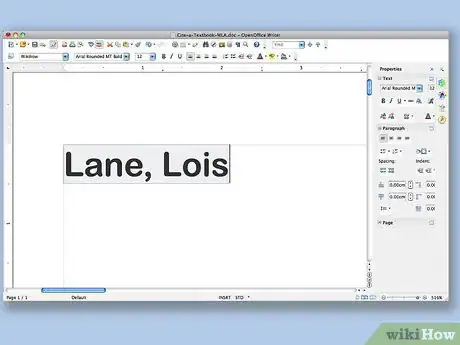

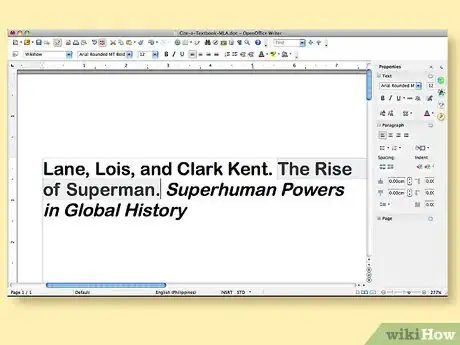
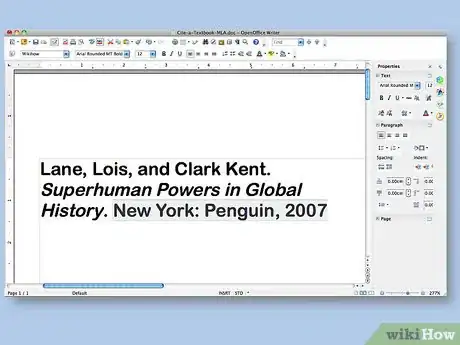
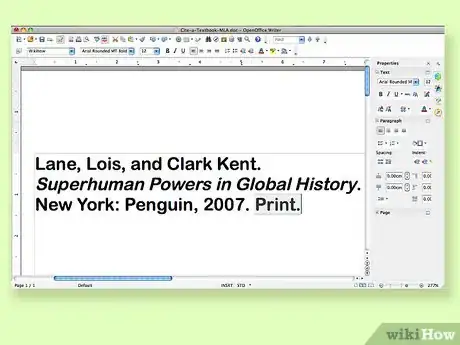
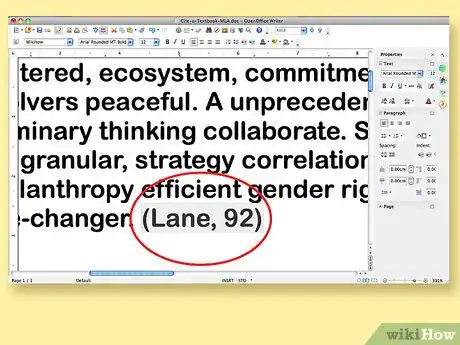
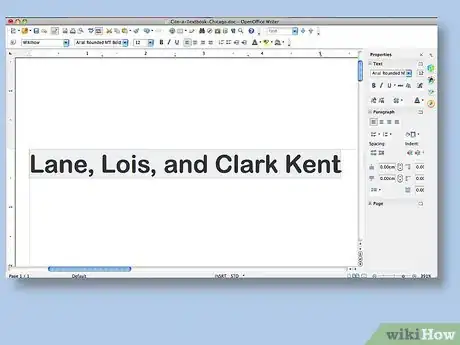
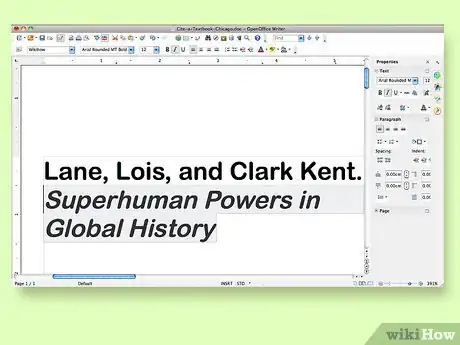
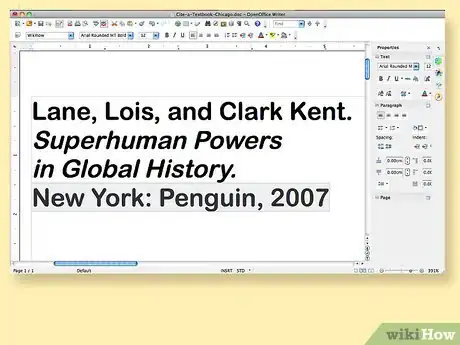
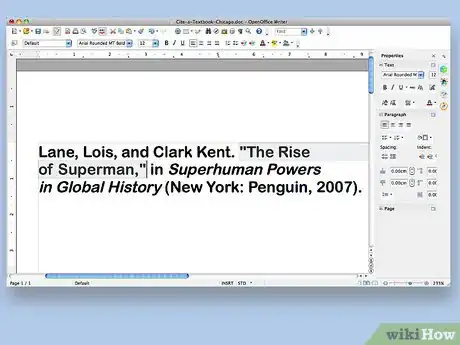

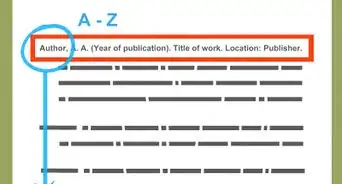

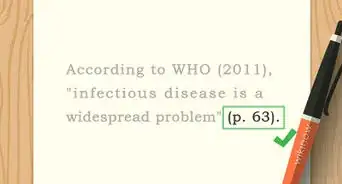

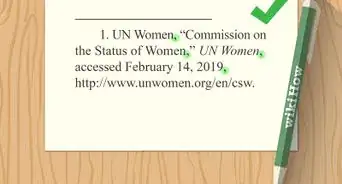

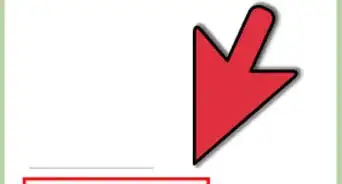

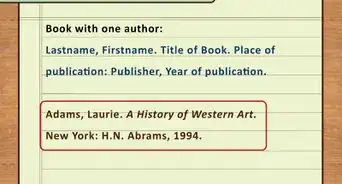


-Step-18.webp)
